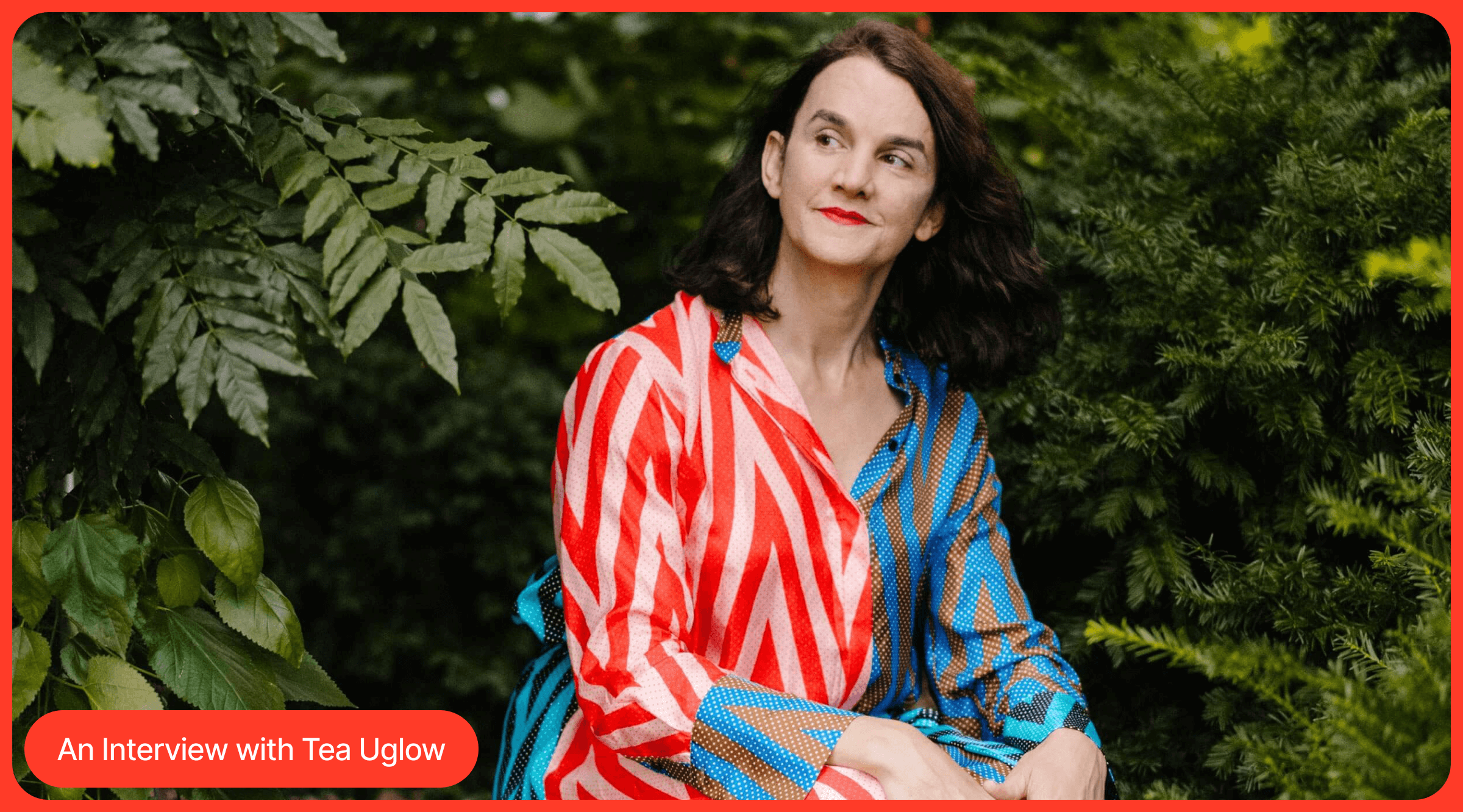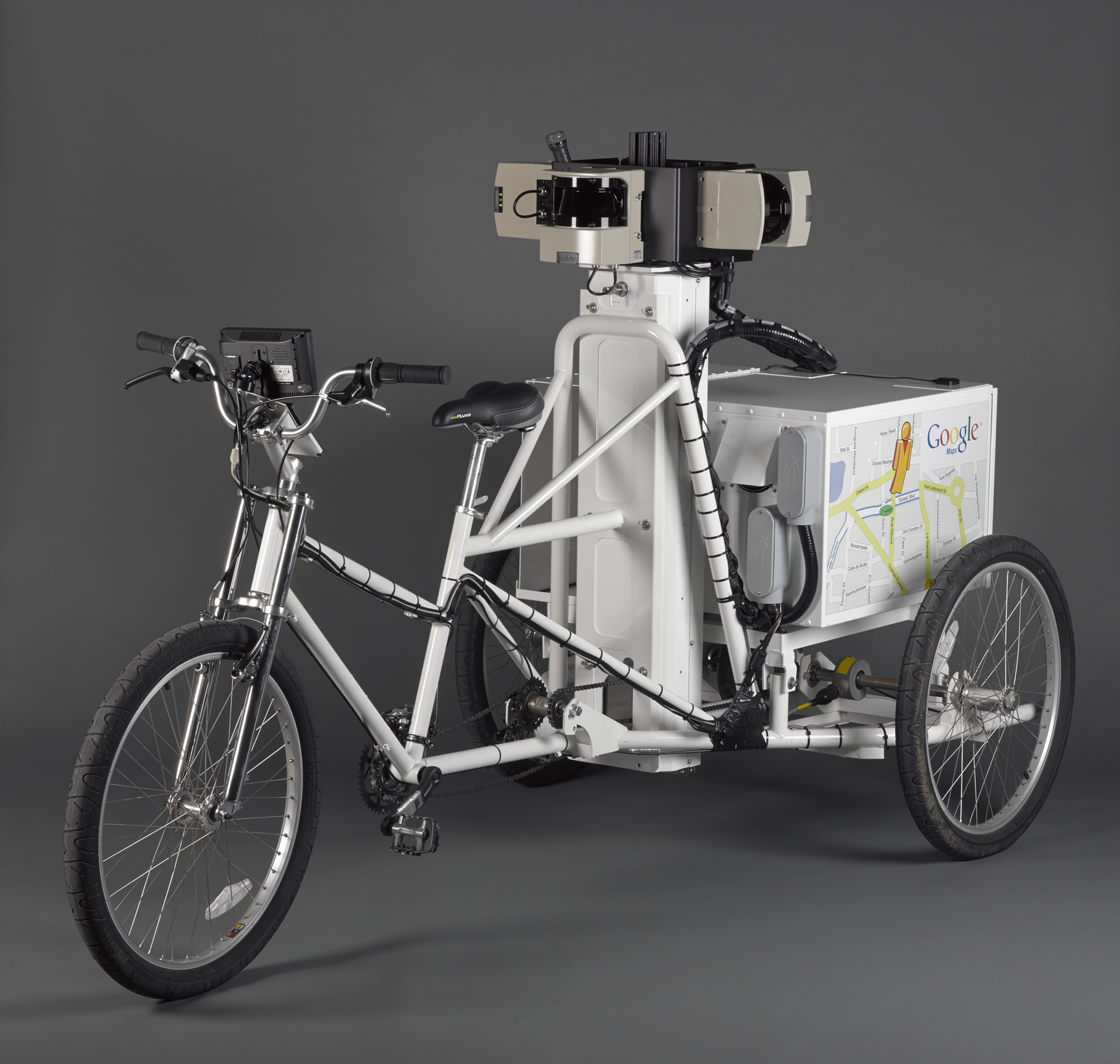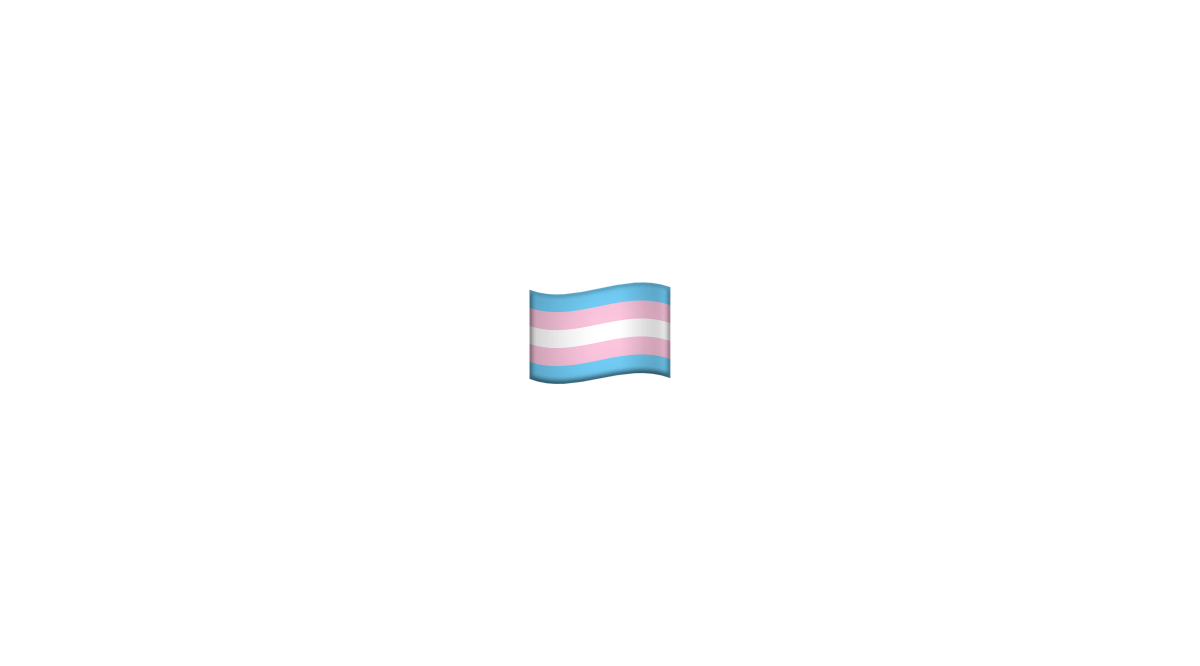Reimagining digital experiences without visual interfaces: An Interview with Tea Uglow
In a conversation with Readymag, Tea told us about her work at the intersection of technology and art, the evolution of the IT environment over the last 20 years, and how her experiences as a transgender, queer, and neurodiverse professional have shaped her career and personal life.

Back in 2006, Tea Uglow joined Google in a temporary position making PowerPoint presentations and stayed there for 17 years. During this time, she founded Creative Labs in London and Sydney and worked on numerous projects exploring the new frontiers of digital formats. Nowadays, she’s a Co-founder and Director at the Dark Swan Institute, where she’s developing a boutique creative advisory for corporate consultants.
We’ve included Tea Uglow’s profile in our Designing Women project because of her key role in pioneering visual storytelling and her commitment to using technology to amplify marginalized voices. In a detailed conversation with Readymag, Tea told us about her work at the intersection of technology and art, the evolution of the tech industry over the last 20 years, and how her experiences as a transgender, queer, and neurodiverse professional have shaped her career and personal life.
Geeks and cyberpunk
I grew up with computers: my father bought me a ZX81, an early British Spectrum model. It was a 16-bit computer you could plug into a television, equipped with a 64 kilobyte RAM plugin but no removable storage. Everything you did on it was temporary—an incredibly ephemeral experience. From a young age, I had to code everything myself, retrieving programs from magazines at six or seven years old. It was a challenge, using a terrible coding language.
“Ever since, I’ve never been fully satisfied with what computers can do.”—Tea Uglow
I remember a quote from William Gibson, who refused to use computers for his writing until they met his standards. At that time, computers were bulky, with noisy keyboards and no solid state drives, and there were no mobile phones. Early sci-fi writers, envisioning worlds of cyberpunk that we aspired to create, greatly influenced me. Works like “Neuromancer” were pivotal during my teenage years in the ‘80s and early ‘90s, along with “Ready Player One” later on. The concept of a machine creating art in “Mona Lisa Overdrive”, particularly boxes reminiscent of 1960s abstract art, struck a chord. In university, I created work through gestures—ideas that seemed abstract in the early ‘90s but are now realized with tools like Tilt Brush.
These ideas weren’t coming out of thin air; they were influenced by figures like Neil Stephenson, who was crucial to many in our field. The impact of science fiction on my work is significant. As my passion for making books grew, so did my reliance on computers, leading me to the Royal Academy to work on their magazine, create books, build websites, and collaborate with charities.
Then, in 1999, during the first dot-com boom, we launched what was essentially a social network, well before I became a designer. I spent a lot of time at Oxbridge, working to create a university networking club. The idea was ahead of its time; the technology wasn’t ready, and few had access to high-speed internet, causing the project to fizzle out. It was a lesson in timing, as similar ideas took off years later at institutions like Harvard and Stanford.
Experiments vs Commercial success
I ended up at Google almost by accident. My journey there wasn’t straightforward—it stemmed from a continual interest in making work and a persistent dissatisfaction with computers, feeling they were never quite what they could be. Google initially hired me for a modest role making PowerPoint slides on an hourly basis three days a week for three months—it was essentially a temp job. I often tell people who are curious about career advancement that you never know where you might end up.
“While I anticipated a career as a traditional designer or artist, I found myself in a niche where my tech skills, like setting up websites, became crucial.”—Tea Uglow
Since joining Google, I’ve been involved in projects that push the boundaries of technology, often highlighting its current state and future directions in frustrating but enlightening ways. We started experimenting with NFTs in 2015, raised concerns about AI and bias in 2016, and delved into generative AI in 2017—issues now recognized as significant. More recently, my interest has grown in the decentralization of the web, a focus for the past four or five years.
Although the projects I’ve been involved with at Google weren’t always successful as commercial ventures, balancing them with the company’s prioritized work was crucial. I had the fortune to participate in launching Chrome and other initiatives like YouTube, Maps, Street View, and Android. Those were vibrant times rich with innovation. However, as time passed, it became increasingly difficult to allocate resources for playful experimentation, which we referred to as “speedboat projects”—small, agile teams exploring new ideas ahead of the main “tanker.”

At DeepMind [an AI research company acquired by Google in 2014], the major breakthroughs were in safe fields like gaming: for example, chess. This allowed for creative freedom and the ability to make mistakes, which are critical in fostering creativity and enhancing intrinsic value. One of my favorite projects was with the Science Museum, exploring odd and wonderful ideas, like creating a YouTube page for the Pope and the Vatican Museum. I humorously suggested that with the right content, they could become a top trending entity on YouTube weekly—a concept they struggled to grasp back in 2006.
Values vs Metrics
Reconciling values with the need to deliver tangible results for a company is incredibly challenging. The last decade has shown that while measurement has always been possible, the difficulty lies in the extent to which we’ve started to optimize everything. Optimization isn’t the same as measurement: it becomes detrimental when it’s about minuscule gains, like making one cent on every sale regardless of the product’s value. This narrow focus misses the broader picture. Ideally, we aim for a system that values and rewards balance and equality. It’s a real struggle for organizations who are committed to these values to maintain them in such an environment.
The challenge now is less about innovation per se and more about guarding against harmful actions. We witness an excess of campaigns and AI work, which, while innovative, opens doors for malicious actors to further erode our confidence in reality. We’re rapidly moving to a place where belief in anything is becoming increasingly difficult, and we live in a highly partisan world.
“Designers should adopt a journalistic approach, acting with integrity and avoiding designs that promote misleading worldviews.”—Tea Uglow
While advertising isn’t renowned for its truthfulness, some organizations do strive for honest advertising. The difficulty is that many agencies and designers don’t support these efforts, especially in digital spaces. If everyone’s focus stays narrowly on profits, genuine values like sustainability risk being sidelined for financial gain.
I recall a fascinating instance from a conference I attended, where the director of a London gallery discussed the Google Arts and Culture project, originally conceptualized around 2008-2010. What started as a seemingly whimsical idea to document the world’s art slowly evolved into a significant resource for museums and galleries globally. However, it’s now viewed by some as a data harvesting exercise, where visual data helped train AIs for image generation programs and filters, transforming what we perceive as magical into something more contentious.
I must admit, the intention behind the original project was never to facilitate this. At the project's inception, the concept of neural networks or AI was almost fantastical. Yet, the development from 2009 to the present, a mere 15 years, seems to retrospectively paint it as part of a long-term plan, despite its sincere beginnings. This project, like our early ventures into NFTs, leaves me with mixed feelings, questioning whether we inadvertently contributed more problems than solutions.
“I’m nostalgic for the early days when the web and companies like Google were very value-driven.”—Tea Uglow
Back then, the focus wasn’t on quarterly returns or monetization strategies. Innovations like email, cable news, and even early versions of products like Android weren’t born from a desire to monetize. There was a strong principle of organizing the world’s information to make it universally accessible, which was a shared value among everyone. As the focus shifted more towards profitability, I found it increasingly difficult to align with the company’s direction. Leaving was a good decision for me, but it’s left me pondering how to make an impact from the outside.
Next generation of a website
Regarding websites and digital experiences, my current fascination lies with audio and sound. Our ability to process multiple sounds simultaneously is remarkable, much like how we can drive while listening to the radio but not while watching a movie. I believe the real magic lies in creating ambient digital environments rather than direct ones. The potential to network smartphones to create collective experiences is vast, yet we seldom harness this collective power. However, trust, or the lack thereof, in institutions and ourselves is a significant barrier to collective action and data security. These are design problems awaiting innovative solutions.
I imagine digital experiences that use the full spectrum of our senses. For example, spatial audio during video calls could align voices with the speaker’s on-screen position, enhancing realism and clarity. Similarly, using cameras and microphones to interpret body language could create more intuitive and immersive digital interactions.
Reflecting on screen usage, it’s ironic how the focal area of our vision matches the typical screen size, suggesting a tragic limitation in our interaction with digital content.
“A creative challenge for designers could be reimagining apps and digital experiences without relying on visual interfaces. Imagine changing a digital photo album’s contents with a simple gesture, offering a tactile and versatile interaction without traditional screens.”—Tea Uglow
There’s a wealth of opportunity for innovation that transcends conventional visual-based design, exploring new ways to engage with digital content.
Identity and coming out
The conversation around identity and the freedom to express oneself has shifted over the years, reflecting broader societal changes. While my personal journey reflects the challenges of past decades, there’s a growing momentum toward inclusivity and the eradication of bias, not just socially, but within the creative industry as well. This shift isn’t just about acceptance; it’s also about recognizing the value of diverse perspectives in enriching creative endeavors. The trend toward more inclusive practices is evident in policy changes and the collective push for representation and visibility within creative outputs. This evolution suggests a hopeful direction where future generations can navigate their identities with greater freedom and support.
There’s a generation for whom these issues are simply not issues, and that’s an incredible development. It fills me with joy, yet also sadness. Reflecting on my own journey, I spent too much of my life feeling deeply ashamed of being trans, queer, and neurodiverse. The most destructive part was the internalization of that shame. It came as a surprise to many when I came out, with some assuming it would end our friendships or my career. The latter certainly shifted, as judgments often come from different standards in professional spaces.
“The industry is still figuring out how to handle diversity. While diversity is somewhat measurable and can be reduced to a KPI, inclusion is more challenging to quantify.”—Tea Uglow
If you find yourself able to count inclusion, it suggests a lack of genuine integration. Equity remains a significant challenge. Issues of race and gender are predominant in the States, but focusing solely on larger groups can leave smaller ones behind. My advice would be to start addressing issues from the bottom up.
One of the initiatives I’m most proud of is the effort to introduce a trans pride emoji in 2016. The process was surprisingly challenging and lengthy, taking about four years. It was a frustrating yet vital project, highlighting the importance of representation and having the means to express our identities. I’m immensely thankful for everyone who supported this cause; it’s perhaps the accomplishment I hold dearest. Every time I see it, it’s like, “Cool.” It’s silly to think you can have a whole career impacted by something as simple as that. But, yes, that one project anyway.

Looking around today, the changes within the community over the past 10-15 years are astounding. It’s becoming easier to be an ally because people are more aware, and understanding language and its evolution is crucial. Language changes, meanings evolve. We have to accept that this is a dynamic process. The concept of “queer” itself is evolving, moving beyond the traditional gay and lesbian movements to embody a political and philosophical ideology. It’s about challenging the normative state and expanding what’s considered ‘normal’ within many cultures, which has been a remarkable step forward in my lifetime.
It’s fascinating how something like the humor in “Friends” becomes a litmus test for this progress. Jokes that were once mainstream now stand out as unacceptable. It’s surprising to realize the content we grew up with is now considered appalling, especially from a queer perspective. My kids can’t even watch half of it. They’re very attuned to these issues and often more protective of me than I am of myself, which means the world to me.